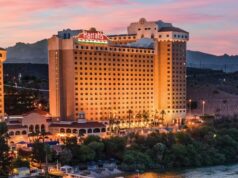BOSTON—Spend some time chatting with Brian Gorski, director of engineering at the 498-room Hyatt Regency Boston and you will quickly understand how the all-electric hotel has been able to slice its annual power consumption by a whopping 42 percent—from 12.3 million kilowatt hours of usage per year to 7.1 million. The drop in energy consumption did not happen in just one year but over a time period of approximately 10 to 12 years when approximately $3 million was spent on improvements in infrastructure, equipment and other systems to improve energy efficiency. NStar, the Massachusetts-based, investor-owned electric and gas utility, provided rebates to help cover the cost of some of the improvements. In the mid-1990s, for example, NStar covered $275,000 of the cost of a $350,000 building automation system. All of the Hyatt Regency Boston’s actions have resulted in hundreds of thousands of dollars in savings.
The hotel, which is managed by Hyatt and owned by Chesapeake Lodging Trust, first opened in 1985. It recently learned that it had earned an Energy Star rating from the U.S. Environmental Protection Agency (EPA). The rating signifies that the building performs in the top 25 percent of similar facilities nationwide for energy efficiency. According to the EPA, commercial buildings that earn the Energy Star rating use an average of 35 percent less energy than typical buildings and also release 35 percent less carbon dioxide into the atmosphere.
The Hyatt Regency Boston’s Gorski says the hotel’s accomplishments are a result of a day by day management process that includes all managers and employees. A green team consisting of representatives of every department meets regularly. “In 2009, our focus was on educating departments,” Gorski says.
From T-12s to T-8s
Converting from incandescent lighting to fluorescent and LED lighting has resulted in significant savings for the hotel that was first opened in 1985. More than 1,000 T-12s were converted to T-8s, LED exit signs were installed, and quartz lights and MR16s were replaced with LEDs. In some cases, wattage was reduced from 50 watts to just 3 watts per lamp. Motion detector light switches were installed in all hotel storage and office areas.
Carbon dioxide sensors help to optimize the amount of outside air used in the building. Fresh air is brought in when needed to help cool the building. “We have CO2 sensors on all return air ducts,” Gorski says. In the past, dampers were always kept open 10 to 15 percent. That resulted in air being heated or cooled unnecessarily. Now the CO2 sensors open the dampers only when fresh air is needed. If a meeting space gets crowded, raising CO2 levels, the dampers automatically go to fully open. “We always have plenty of fresh air,” Gorski says.
Each meeting room has its own variable air volume box (VAV). A variable air volume box is just what it sounds like—a box that can hold a variable amount of air. It helps make air-conditioning systems more efficient by regulating the amount of cooling targeted toward any specific room or area.
In Process of Updating EMS
For years the hotel has had a guestroom energy management system (EMS) that allows front desk personnel to turn systems on when a guest checks in and off when a guest checks out. The hotel is currently transitioning to a passive infrared, motion detector-based system in all guestrooms to help control room temperature based on room occupancy and guest preference.
Energy efficient motors and variable speed drives throughout the facility also help to reduce energy consumption. Rooftop exhaust fans are controlled by an energy management system. The heating system was changed to a plate and frame two pipe heat exchanger to limit electric heat, and variable-speed hood controllers help save energy in the kitchen. Submetering makes it easy to monitor electricity use.
Gorski says the Hyatt Regency Boston plans to invest in a new cooling tower this fall. New evaporator fans for the hotel’s 18 walk-in coolers are also planned. Three 25 horsepower (HP) fans will replace three 50 HP fans.
In addition to being a Boston area leader when it comes to energy efficiency, the Hyatt was one of the first hotels in the area to compost its food waste. It is picked up three times a week by Pinehurst, Mass.-based Herb’s Disposal and eventually becomes fertilizer. The hotel also recycles bottles, cans and cardboard.
Go to the Hyatt Regency Boston.
Glenn Hasek can be reached at editor@greenlodgingnews.com.







